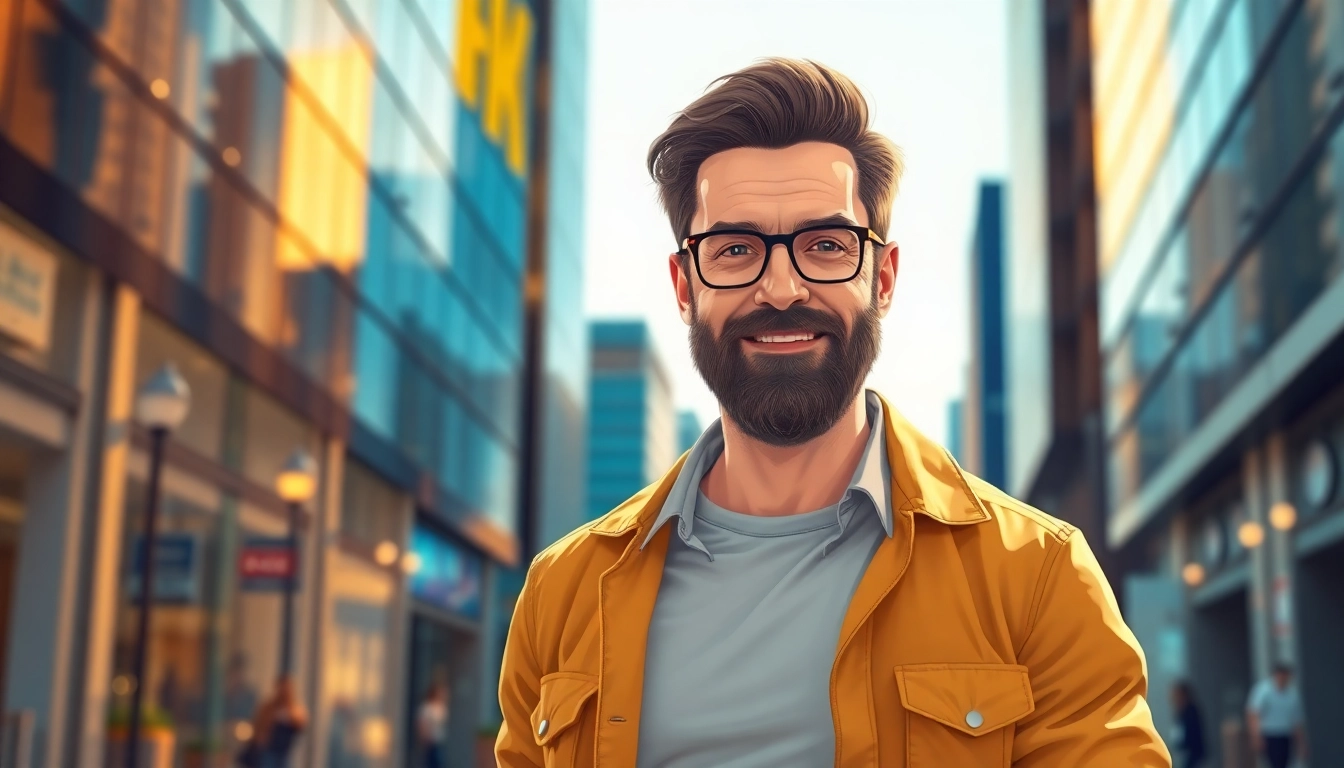Understanding the DILF Phenomenon: Meaning, Cultural Significance, and Modern Perspectives
In contemporary discussions of masculinity and popular culture, the term dilf has emerged as a distinctive descriptor that captures a specific archetype of attractive, confident, and often older men who exude an appealing blend of maturity and charisma. Originally rooted in slang, the term has expanded its reach across social media, entertainment, and cultural narratives, reflecting shifting perceptions of masculinity and age-related attractiveness. The rise of this term and its associated archetype highlights evolving attitudes toward age, confidence, and gender roles, making it a fascinating subject for both cultural analysis and social commentary.
The Origins and Definition of DILF
What Does DILF Stand For?
The acronym DILF stands for “Dad I’d Like to [have sex with].” It is a playful, provocative term that combines humor with admiration, often used to describe older men who possess a certain rugged attractiveness and charisma reminiscent of a desirable father figure. Unlike traditional terms of attractiveness that focus solely on youth, dilf emphasizes an appeal rooted in maturity, confidence, and a sense of life experience.
Historical Context and Evolution
The term originated in American slang, gaining popularity through pop culture and internet memes in the early 2000s. Its playful but provocative nature quickly made it a staple on social media platforms, where users share images, memes, and jokes that celebrate older men who defy conventional standards of youthful attractiveness. Over time, the concept has expanded beyond mere humor to embody a cultural appreciation of older men who exude confidence and style, challenging stereotypes that associate attractiveness solely with youth.
The Cultural Significance of DILF
Attractiveness and Age: Challenging Norms
Historically, societal standards of attractiveness have prioritized youthfulness, often sidelining older individuals as less desirable. However, the emergence of the dilf archetype challenges this norm by celebrating a different kind of appeal—one rooted in maturity, confidence, and life experience. This shift reflects a broader cultural movement that recognizes attractiveness as multifaceted, encompassing personality, style, and charisma rather than age alone.
Representation in Media and Pop Culture
From Hollywood actors to social media influencers, many figures exemplify the dilf archetype. Celebrated personalities like George Clooney, David Beckham, and Idris Elba often embody qualities associated with this label—mature, confident, stylish, and sexually attractive—resonating with audiences seeking diverse representations of masculinity. The portrayal of such figures in media underscores a cultural appreciation for older men who maintain their allure and appeal.
The Evolution of DILF in Popular Media and Social Platforms
From Subculture to Mainstream
Initially a niche term among internet users and meme communities, dilf has transitioned into mainstream consciousness. TV shows, movies, and advertising campaigns increasingly feature older men who embody this archetype, thereby normalizing and even celebrating the attractiveness of mature masculinity. Social media platforms like Instagram, TikTok, and Twitter have played pivotal roles in amplifying the term, with countless users sharing images and commentary that reinforce the appeal of the dilf persona.
Role of Digital Communities and Meme Culture
The internet’s democratization of content creation has allowed communities to define and reframe masculinity. Memes, viral videos, and online discussions often parody or celebrate the dilf archetype, emphasizing traits like confidence, style, and a relaxed attitude. These digital spaces foster a sense of community among individuals who identify with or admire this archetype, further cementing its place in modern cultural narratives.
Distinguishing DILF from Related Terms
Comparison with MILF and GILF
While dilf shares similarities with other age-related attractiveness labels like MILF and GILF , each term highlights different stereotypes and cultural perceptions. MILF emphasizes maternal attractiveness, often associated with sexuality and nurturing qualities, whereas GILF emphasizes older men with grandfatherly appeal. DILF specifically centers on older fathers who exude confidence, style, and sex appeal, challenging both youth-centric beauty standards and traditional gender roles.
Gender and Age Dynamics
The distinctions among these terms also reflect gendered perceptions of attractiveness and societal expectations. DILF, for example, underscores that masculinity and desirability are not confined to youth but can be embodied by mature men who embrace their age and experience.
Why the DILF Identity Resonates in Modern Society
Confidence, Self-Awareness, and Style
The appeal of the dilf archetype is deeply tied to confidence and self-awareness. Men who embody this identity often exude a sense of ease, style, and authenticity that attracts admiration. Their fashion choices, grooming, and demeanor reflect a conscious embrace of their age and attractiveness, inspiring others to see maturity as a desirable trait.
Counteracting Ageism and Stereotypes
The recognition and celebration of dilfs serve as a form of resistance against ageism, challenging societal notions that associate aging with decline. By highlighting attractive older men, popular culture promotes a more inclusive and diverse understanding of masculinity—one that values experience, confidence, and personal style over youth alone.
The Role of Age, Confidence, and Style in DILF Representation
Age as an Asset
In the dilf archetype, age is portrayed as an asset rather than a liability. Men who are considered dilfs often display an effortless style, grooming, and demeanor that accentuate their maturity. Their confidence can be seen in their posture, speech, and interactions, which all contribute to their overall appeal.
Fashion and Grooming
Fashion choices play a significant role in reinforcing the dilf persona. Well-fitted clothing, grooming, and accessories showcase a man’s attention to his appearance, which complements his confidence. Whether it’s a tailored suit, casual chic, or rugged outdoor style, the focus remains on authenticity and self-expression.
Impact on Masculinity and Gender Stereotypes
Redefining Masculinity
The dilf archetype exemplifies a broader shift toward redefining masculinity in modern culture. It emphasizes traits like confidence, emotional intelligence, style, and authenticity—qualities that challenge stereotypical notions of masculinity centered on dominance and stoicism.
Breaking Stereotypes
By celebrating older men who are attractive and confident, society begins to challenge stereotypes that associate aging with loss of attractiveness or vitality. This shift promotes a more inclusive view of masculinity that values diversity, maturity, and self-assurance.
How Platforms Like CrushOn AI Engage with DILF Themes
Creating Customizable AI Characters
Platforms such as CrushOn AI offer innovative ways to explore and engage with dilf themes through interactive AI characters. Users can create or choose characters with specific traits that embody the dilf archetype—confident, stylish, charismatic, and mature—allowing for personalized roleplay, storytelling, or casual conversation experiences.
Features Supporting DILF Engagement
CrushOn AI provides features like character personality customization, contextual memory for maintaining conversation continuity, and multi-character group chats. These capabilities enable users to craft rich, realistic interactions that reflect the qualities associated with the dilf archetype, fostering engaging experiences that can be both entertaining and insightful.
Cross-Device Accessibility and Advanced Language Models
Accessible via web and mobile apps, CrushOn AI utilizes advanced language models like GPT-4o mini and Claude 3.5 Sonnet to generate natural, fluid responses. This technology allows for seamless conversations that can mimic real-life interactions, making the exploration of dilf themes more immersive and personalized.
The Future of DILF in Cultural Narratives and Media
Continued Representation and Diversity
As society becomes more inclusive, the representation of dilf archetypes is likely to expand across various media forms, showcasing men of diverse backgrounds, styles, and personalities. This evolution will further challenge stereotypical notions of masculinity and attractiveness, promoting a broader acceptance of age and style diversity.
Influence of Technology and Social Media
With ongoing advances in AI, digital platforms, and social media, the portrayal of the dilf archetype may become even more nuanced and personalized. Virtual influencers, AI-generated characters, and interactive experiences could redefine how society perceives masculinity, attractiveness, and confidence in the years to come.
Conclusion: Embracing Diversity and Confidence in Modern Masculinity
The dilf phenomenon encapsulates a broader cultural shift toward celebrating maturity, confidence, and style as integral components of attractiveness. It challenges traditional stereotypes, promotes diversity, and underscores the importance of self-assurance at any age. As modern society continues to evolve, embracing the dilf archetype reflects a more inclusive, confident, and authentic understanding of masculinity.
Understanding the dilf meaning and its implications helps us appreciate the complex layers of attractiveness and cultural expression, emphasizing that confidence and style transcend age and societal expectations. Moving forward, the dilf archetype will undoubtedly remain a vital part of cultural conversations, inspiring men and women alike to celebrate confidence, diversity, and self-love in all their forms.

